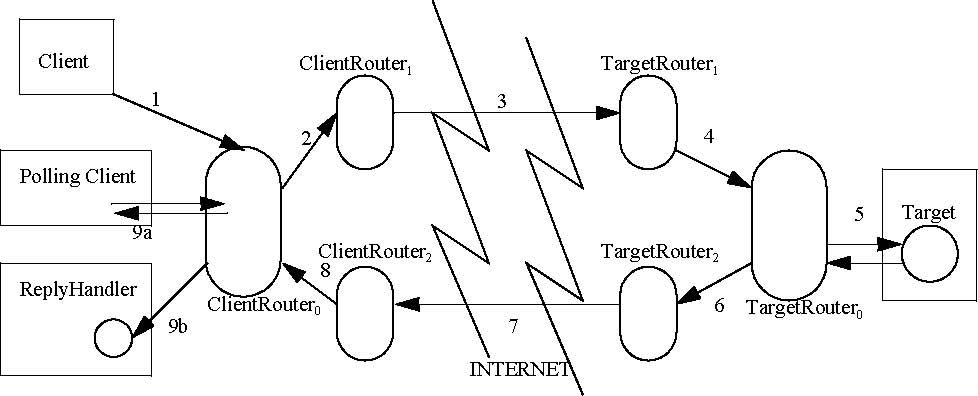
| Previous | Table of Contents | Next |
Asynchronous method invocation and time-independent delivery of requests and responses cannot be handled in a first-class
manner within the synchronous dialog of the GIOP 1.1. The basic requirement for Messaging is that individual request and reply
messages (and their components) can be discussed by routing agents. These agents, or Routers, explicitly pass messages between
them and interact with clients and targets of asynchronous operations. This section describes the interactions between a client
and the first Router to handle its request, between successive Routers as the request is passed along the path to the target,
and between the target and the Router that actually makes the request on behalf of the original client. This Router closest
to the Target then turns the reply into a Request on a ReplyHandler, allowing the Reply to be routed using the same mechanism
as the original request. The reply is finally delivered to an application’s ReplyHandler or through an application’s use of
the Polling APIs.
Note – This Introduction specifies Routing interoperability for CORBA Messaging products. The information presented in this
section is not required for building applications that make Asynchronous operation invocations.
Throughout this Introduction a configuration is assumed in which the Client is separated from the Target by the Internet.
Using this “most complex? scenario, all the details of the Routing procedure are exposed. To help understand this design,
consider
Figure 22-1.

Figure 22-1 Routing Interoperability Overview